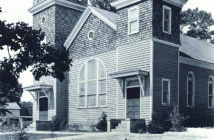Guy Rose began reading comic books at the age of seven. By the time he was 11, he was a collector and from that time his collection grew like the cast in the latest X-Men movie.
Rose, 62, has been collecting comic books for 53 years. His involvement in what is now a phenomenon has brought him from hobbyist to seller to a Comicon promoter.
According to the VAComicon website, Rose was the original founder of VA Comicon way back in 1986 when it was called CRCC for the “Chester, Richmond Comic Club.” Even though he has passed the mantle of the show to Brett Carreras, he continues to be an active vendor at the show, showcasing a premium selection of vintage and graded books from the Gold (c. 1938 – c. 1950), Silver (c. 1953 – c. 1970), Bronze (c. 1970 – c. 1985) and Modern (c. 1985 – today) ages.
Rose sells books, actually magazines, at various shows in Virginia and buys and appraises comic collections. His collection that he dips into for the comic book shows numbers about 2,500. He holds his prize vintage collection for himself.
“I [started]collecting certain titles and learned about comic books prior to 1960 from collecting, reading, and learning about vintage comics,” Rose said.
He would pick up soda bottles in the dirt parking lot at Colonial Heights High School; cashing them in at a local grocer for 2 cents each (return on glass bottles was expected in the 1960s) and buying comic books with the booty. When Rose began reading comics, the price was 10 cents, but by the time he started collecting, the price had risen to 12 cents. Now a new Superman, Spider-Man, or Wolverine will cost you $2.99 to $5.99.
While you can buy a new comic book for a relatively inexpensive price, some vintage books will sell at auction for as much as $4.1 million. The higher vintage books are graded, based on what kind of shape they are in, no dog ears, the issue number or year and whether they are signed copies. A movie version of a new protagonist or villain can drive up the cost of a comic book in the collector’s world.
“Harley Quinn, a villain that was introduced in the Batman [TV] series in 1988 was sold for $3,” Rose said. “Now, after appearing in a Batman movie, it’s worth $600.” Another price escalation has happened for the comic book-turned-TV series “Agents of S.H.I.E.L.D.” A revived superhero, Ant Man (c. 1942), has now hit the big screen, and the book, as expected, has gone up in price.
Serious collectors like Rose use Overstreet Comic Book Price Guide to get an idea of how their collected books are worth as well as those they want to buy.
While today’s comic books are typically 36 pages, pre-WWII Golden Age books were 68 pages in length. The need to ration during the war compressed the page count and the number of staples from two to one.
Some comic book artists, writers, pencilists, inkers, colorists and letterers (who add captions and speech balloons) have become like rock stars in the comics world and are guest speakers at Comicon events.
“When Stan Lee, creator of Spider-Man, Thor, and others, autographs copies of his books, many stand in line for hours,” Rose said.
This year’s Comicon at the Richmond Raceway (Oct. 20 – 21) will feature Howard Chaykin, artist of The Shadow; Mark Waid, a writer for DC Comics; and Denny O’Neil, writer, and principal editor for Batman. More will be announce at a later date.
In 1974, comic book conventions were christened Comic-Con events. The first and the largest in the U.S. was in San Diego and 800 were in attendance. Since then, attendance has increased by 60 percent. Rose said VAComicon mirrors that of San Diego and others.
“It used to be that dealers would be the only people at the shows,” said Rose. “Now with the popularity of comics again and cosplay [fans dressing up as their favorite comic book characters], the events have become as much for cosplay as it is for collectors. Before cosplay, dealers made the same money as they do today.” Cosplay adds fun, but not money, in the pockets of dealers, he said.
The world of Comicon has changed the way children and adults alike view a good story and art. As many adults attend the events as children. According to Rose the shows never had women attending. Now, there are at least 40 percent women in attendance.
Graphic novels are no longer a novelty. Rose said that originally a graphic novel was only a series of comic books bound into one book. The world of graphic novels has become a staple at both comic book readers’ homes as well as libraries.
Chesterfield County Libraries lists 3,361 graphic novels in its catalog.
The Meadowdale Library has hosted a Comicon for four years. Rose and Carreras helped organize the first one. How do graphic novels fit into the general catalog?
“We are always looking for ways to widen what libraries have to offer,” said Jennifer Shepley, Branch Manager for Community Services at Chesterfield County Public Libraries. “We grapple looking for ways to promote creative ways to engage those who want to reach out to teens.”
Similar to novels, graphic novels have a beginning, middle, and end. They have a main character that develops through conflicts and the story’s climax. A graphic novel’s text is both written and visual.
“[Graphic novels] are a perfect way to reach out to those who relate better in a visual context and then make it to the next step,” Shepley said.
The Richmond Comicon will take place on Saturday and Sunday, Oct. 20 and 21.
The Meadowdale Library Comicon will take place on Saturday, March 18, 2017.

